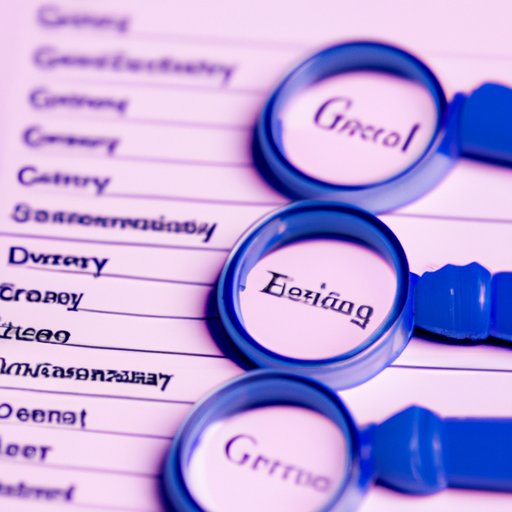
Introduction
Are you an expectant parent wondering when you can find out the gender of your unborn child? The good news is that there are several methods available, and each offers its own unique insights. In this article, we will explore the different options for gender detection, the pros and cons of each, and insights for making a decision that’s right for you.
The Timeline of Gender Determination: When Can You Find Out?
There are several methods that can be used to determine the gender of an unborn child. The traditional method is through a routine ultrasound scan that is usually done between 18-22 weeks of pregnancy. During the scan, the ultrasound technician will look at the external genitalia of the baby.
Another method, known as noninvasive prenatal testing (NIPT), can detect chromosomal abnormalities, sex chromosomes, and other genetic disorders as early as 10 weeks into the pregnancy. NIPT analyzes fetal cell-free DNA that circulates in the mother’s blood. However, it is more expensive than a traditional ultrasound.
A third and lesser-known method is Amniocentesis, which is done between 14-20 weeks of pregnancy. This method involves a needle being inserted into the amniotic sac to draw out fetal cells for testing. However, this method carries a higher risk of complications and is usually recommended only if there is a high risk of genetic disorder or chromosomal abnormalities.
The Pros and Cons of Early Gender Detection
Early gender detection can have both advantages and disadvantages for expectant parents. One of the primary benefits is that it allows parents to plan and prepare for the gender of their baby. Parents can also choose to reveal the gender to friends and family, adding to the excitement of the upcoming birth.
On the other hand, some parents prefer to wait until birth because they enjoy the element of surprise. Additionally, finding out the gender early on can create emotional turmoil for some parents if they have a strong preference for one gender or another.
If you’re not sure whether to find out the gender early or not, one practical tip is to consider your personality and preferences. If you are the type of person who enjoys planning and preparation, early gender detection may be a good choice for you. However, if you’re more of a laid-back person who likes to go with the flow, waiting until birth may be a better option.
The Role of Technology in Gender Determination
Advances in technology have made it possible to determine the gender of a baby earlier and more accurately than ever before. For example, the Harmony prenatal test can detect the gender of a baby as early as 10 weeks into the pregnancy. This test analyzes the baby’s DNA mixed with the mother’s DNA found in her blood.
Another technological method for gender prediction is ultrasound. The 3D ultrasound technology allows for a clearer visual of the baby’s external genitalia in the womb. Additionally, the 4D ultrasound offers a moving image of the baby for a more realistic viewing experience.
Is It Possible to Predict Gender Before Your First Ultrasound?
There are many old wives’ tales and unscientific methods that people use to guess the gender of an unborn baby. These include things like the shape of the baby bump, the baby’s heart rate, and even the mother’s cravings.
However, scientific research has found these methods to be inaccurate. For example, one study found that fetal heart rate was not a reliable predictor of gender. Similarly, the shape of the bump and the mother’s cravings were also found to be unhelpful for gender prediction.
Despite their lack of accuracy, many expectant parents still enjoy using these methods to guess the gender of their baby. One practical tip for couples who prefer this is to view them as a fun game rather than relying on them for accuracy.
Waiting for the Big Reveal: When to Find Out Your Baby’s Gender
If you’re feeling undecided about whether to find out the gender early or wait until birth, it can be helpful to consider the pros and cons of each. One benefit of waiting until birth is that it allows you to enjoy the element of surprise and anticipation leading up to the birth. Additionally, it can be emotionally fulfilling to wait until the birth to reveal the gender of your baby to friends and family.
However, waiting until birth can also be challenging for those who prefer to plan and prepare. It can also create anxiety if parents have a strong preference for one gender or another.
Ultimately, the decision about when to find out the gender of your baby is a personal one. One practical tip is to talk with your partner and explore your respective preferences. You can also seek advice from your doctor or a counselor if you’re having a hard time making a decision.
Conclusion
Determining the gender of your unborn child is an exciting and personal decision. Whether you choose to find out the gender early on or wait until birth, it’s important to consider your individual preferences and personality. By exploring the different options and reflecting on your values, you can make a decision that feels right for you.





